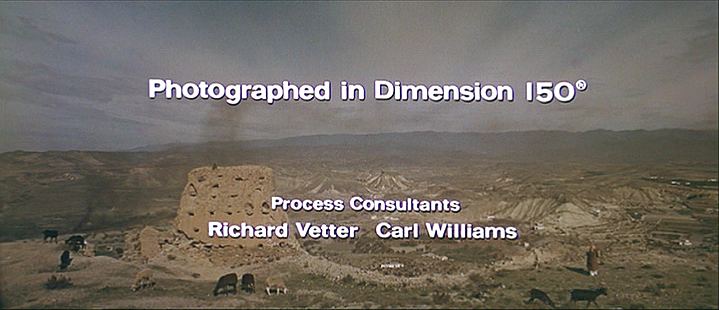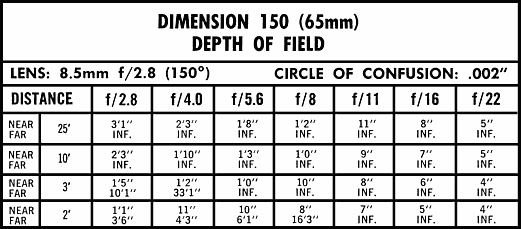
A product of Todd-AO Corp.
Dick was one of the good guys and we'll miss him.
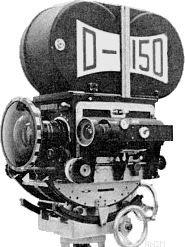
Mitchell BFC 65mm camera with the 150 degree
lens that gave the new process its name.
carlwilliams(lft)halmohr.jpg) |
Richard Vetter, center, and Hal Mohr, ASC. |
By 1964, productions being shown in single film Cinerama were quite successful, a fact apparently not missed by 20th Century-Fox, one of the few major studios that didn't produce a film for this type of presentation. Todd-AO had its beginning very similar to Cinerama's ending. But Todd-AO's image had changed. It was felt that new life needed to be breathed into the system in order to emulate Cinerama single film. This was done in the form of "Dimension 150", which was Todd-AO with the addition of a few new lenses designed by Dr. Richard Vetter and Carl Williams. The system derived its name from the widest lens, which covered a horizontal angle of 150°, though the extreme wide angle of the lens was too difficult for directors to use, resulting in very little material shot with it ever being used in a feature film. We're getting into a rut here, because that's exactly the same thing that prevented Todd-AO, with it's slightly less wide "Bugeye" lens from becoming another Cinerama. Other new lenses covered angles of 120°, 70°, and 50°, in addition to the regular compliment of standard lenses built for Todd-AO. A Dimension 150 film was essentially a Todd-AO production, which wasn't a bad thing, with a flashy new name and presented in a theatre environment not unlike the Super Cinerama design. This clearly was not the intention of Vetter and Williams, who, like Mike Todd, had sought a panoramic process that had real visceral impact. But Hollywood just didn't grasp this. So entrenched were they in the way things were done for decades that Dimension 150, like Todd-AO and Cinerama, was diluted into a conventional story telling medium. A very good looking story telling medium, but not what had been envisioned.
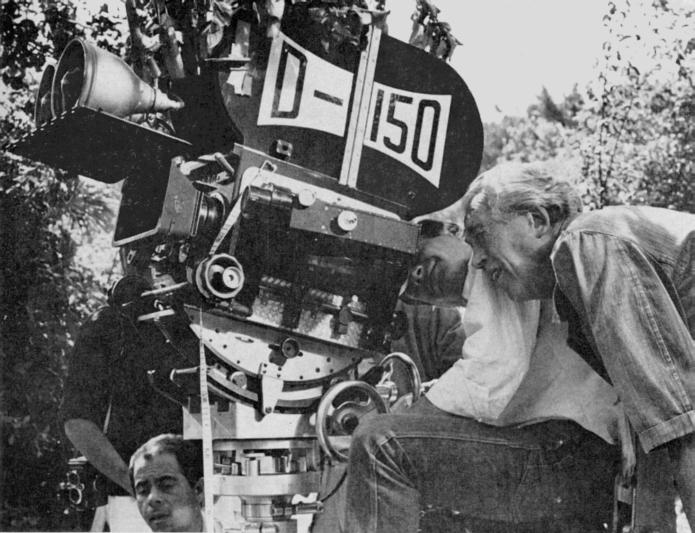
John Huston lining up a shot in The Bible.
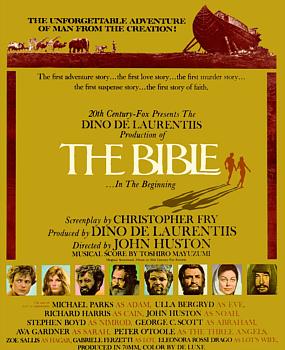 In 1966, Fox released John Huston's totally unremarkable film, The Bible...In the beginning, produced by epic shlock producer Dino DeLaurentiis. Fox didn't promote the Dimension 150 process to any great extent and it was shown primarily in conventional 70mm houses. Advertising materials for the film only referred to the system as D-150 or "Produced in 70mm".
In 1966, Fox released John Huston's totally unremarkable film, The Bible...In the beginning, produced by epic shlock producer Dino DeLaurentiis. Fox didn't promote the Dimension 150 process to any great extent and it was shown primarily in conventional 70mm houses. Advertising materials for the film only referred to the system as D-150 or "Produced in 70mm".
While the production side of the system developed by Dr. Vetter and Mr. Williams was called Dimension 150, the presentation side, backed by United Artists Theaters, was simply referred to as "D-150", and it was designed to replace the existing screen with a deeply curved version, and projection system in any theater. Critical to the design, as had been the case with Cinerama, was absolute head-on projection in order to provide the best possible image with the least distortion and crisp focus. It could handle 70mm, and 35mm anamorphic or flat, with automatic changes in screen maskings and curtain controls. For some interesting information on this system, visit Steve Kraus' website.
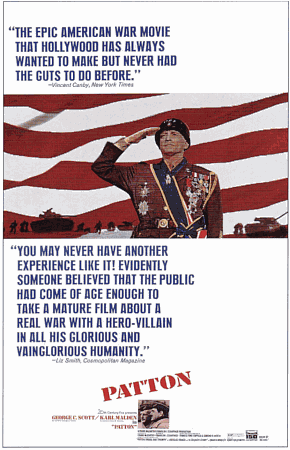 The second, and final film to carry the Dimension 150 credit was Franklin Schaffner's 1970 award winning Patton, known as Patton: Lust For Glory in Britain, because they didn't think Monty was lusting for glory. Despite the discontinuation of Dimension 150 as a production process, D-150 as a theater presentation system had some success over the next few years, and many of those installations continue to operate to this day, though these classy theatres are most decidedly on the endangered species list.
The second, and final film to carry the Dimension 150 credit was Franklin Schaffner's 1970 award winning Patton, known as Patton: Lust For Glory in Britain, because they didn't think Monty was lusting for glory. Despite the discontinuation of Dimension 150 as a production process, D-150 as a theater presentation system had some success over the next few years, and many of those installations continue to operate to this day, though these classy theatres are most decidedly on the endangered species list.
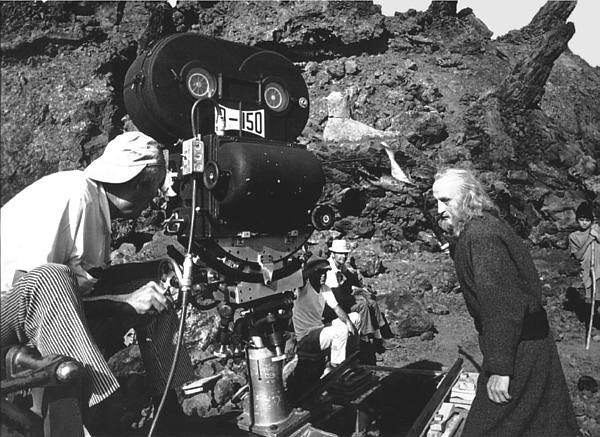
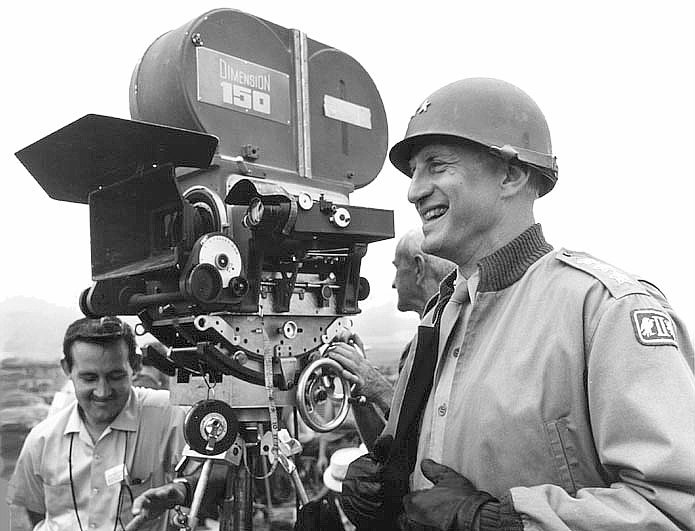
Above The Bible and Patton.
Photos courtesy of Robert Weisgerber
